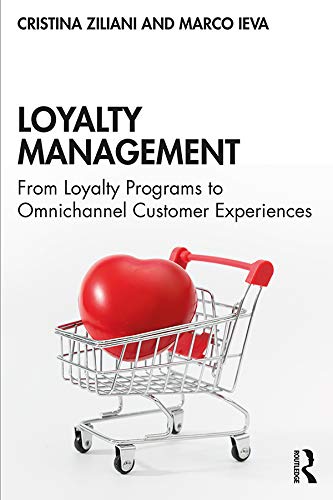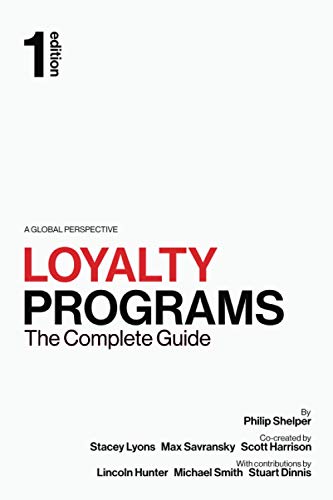Disclosure: This post may contain affiliate links, meaning we get a commission if you decide to make a purchase through our links, at no cost to you. Please read our disclosure for more info.
Retaining existing customers and attracting new ones is the backbone of any business. In the retail industry, customer loyalty programs can result in extremely high retention, acquisition, and ROI rates, where acquisition mainly happens through referrals from existing customers. So, it’s no wonder that so many large and small retail businesses are keen on implementing loyalty programs as part of their marketing campaigns.
But what types of loyalty rewards exist, and how effective are they? Below, we explain the main types of loyalty programs and list major retail operators that successfully implement them. And most of these brand names already speak for themselves!
In This Post:
Point Accumulating Programs
This is the most simple, straightforward way of rewarding your customers. Here, buyers accumulate points — often for every dollar spent. Later, they can either exchange these points for goods, discounts on specific items, or discounts on any following purchases in the same retail chain. The main advantage of such programs is that they are easy to track and result in instant gratification. The downside is that they often cheapen the company’s image.
Starbucks
Starbucks gets away with a very simple point-based reward program without cheapening its brand image — over 40 million loyal members are solid proof of that. But there is a catch — customers earn their points only when they buy their coffee with an app. This serves a dual purpose — it promotes a sustainable shopping format, which is important for recent generations of consumers, and adds a gaming element to the whole process—especially considering that regular customers collecting app points can also participate in more events and game-like contests!
PetSmart
PetSmart is, indeed, smart — they use the most simplistic reward strategy without compromising their brand image. They assign bonus points for each dollar spent and donating to their animal charity initiatives. This practice promotes a strong message, which many customers are willing to support. Also, you can earn points for completing a profile on their website. It is another smart tactic that gives the company access to customers’ contact details for further marketing.
The accumulated points can be spent on exclusive member-only deals — another gaming element to make customers feel special and standard sales. Plus, loyalty program members get discounts on goods around their pets’ birthdays (another way to show that the company cares) and can have their orders above $49 shipped for free.
Tiered Loyalty Programs
Tiered loyalty programs are similar to standard point accumulation but are designed to promote more exclusivity. Depending on which tier the customer belongs to, the rewards can be very different. The actual tier-allocating logic can be different, too — but generally, it depends on the amount of total annual spending. So, such programs often combine point-based reward logic with an extra touch of exclusivity.
Sephora
A major French cosmetics retailer, Sephora, assigns bonus points for every dollar a customer spends and tiers these customers on the amount of their annual spending. The company has three client tiers — Insider (automatically starts by registering with a program), VIB (anyone who spends up to $350 a year), and Rouge (premium tier that starts at $1000/year spending).
The higher the tier, the higher the reward and discounts customers are entitled to — along with access to exclusive offers and free shipments. In a way, this system is like a progressive tax in reverse — the more the customers give away, the more they receive back.
Ulta Beauty
Ulta Beauty is another beauty retailer, but this time — an American one. The system is very similar to Sephora’s — bonuses for each dollar spent and three customer tiers depending on the spent amount. But Ulta Beauty goes further than that, assigning points for registering with an app and sharing contact data. Based on this data, customers of all tiers are also eligible for birthday discounts and other exclusive perks.
Cash-Back Programs
Cash-back programs are instant discounts on certain goods that are immediately returned to the buyer’s card or bank account. It is another straightforward way of instantly gratifying the customers. But, unlike point accumulation, this program does not cheapen the brand’s image and offers a great way to increase the average order value (AOV).
Target
Target is one of the major US retail chains, offering everything from clothes to electronics. Despite its simplicity, the Target Circle cash-back program has over 110 million users. Besides instant cash-back on eligible goods, loyalty program participants can get exclusive member deals, birthday vouchers valid for 30 days, and a chance to vote on the company’s poll. Democracy and capitalism — what better way to engage your typical American consumer? Well, it worked for 110 million clients, that is, a third of the US population.
Kohl’s
Another prominent American retail chain, Kohl’s, features up to 5% instant cash-back on eligible items and up to 7.5% cash-back for customers with a Kohl’s card. There are, traditionally, personalized offers for regular customers and birthday gifts for clients who share their contact info for further marketing. Besides, Kohl’s was one of the pioneers in offering extra bonuses for every payment made over mobile phones. With almost a century-old history, over a thousand stores across 49 states, and an annual revenue of $15-19 billion, Kohl’s is certainly doing something right.
Paid Loyalty Programs
This reward program is based on a client paying a monthly or annual fee for access to some premium-exclusive features. And, while many marketers consider such tactics contradictory at best, it seems to pay off well for some major retailers. Besides, it is one of the top ways to promote exclusivity and strengthen the brand’s image as a high-end retailer.
Amazon Prime
Amazon Prime access is available either on a monthly ($14.99) or annual ($139) basis. In return, the customers are entitled to additional shipping benefits, access to a whole range of digital services, including live show video streaming and new reads, along with some member-exclusive discounts. So, even though Prime is not a loyalty program in a classic sense — more of a paid subscription service, it is still a success. Possibly because some Amazon goods and services are only available with this subscription.
Walmart
Walmart Plus is a half-subscription, half-loyalty reward program similar to Amazon Prime. It also comes monthly ($12.95) or annually ($98), allowing access to Paramount video streaming, exclusive offers, and free shipments. But it has other perks, too — bonuses on fuel, a quick scan-and-go option without the need to stand in line at the cash register, and early access to new exclusive deals. The program is popular because, for every $98 investment, Walmart promises up to $1300 annual savings, which is an excellent bite for regular shoppers.
Perk-Based & Mixed Programs
The above four loyalty programs are classic, almost academic examples of how to reward and entice your customers. In practice, there can be limitless combinations of those — depending on your business specifics and target customers. In fact, mixing different reward programs can be the best, most consumer-tailored solution.
IKEA
IKEA is one of the most famous furniture retail chains, with over 110 million loyal customers across the entire globe. Yet, this prominent retail chain does not rely on any single loyalty reward system; instead, it regularly updates and customizes its offers to make customers feel welcome. More importantly, it offers its clients perks they will not get anywhere else. Some of these perks include free hot drinks with every store visit, a prolonged guarantee and return policy on any defective items, store interior designs customized per each country/city’s traditions, etc.
MyWalgreens
MyWalgreens is a US health and pharmacy retail chain that combines an exclusive perk system with a cash-back for regular customers. With this retailer, return customers have access to 24/7 online pharmacy chat, quick pickup and delivery options, the ability to book medical and vaccination appointments and exclusive offers and discounts for registered users.
That covers the top loyalty reward programs the largest and most successful retailers implement. When implementing any program, the last tip is always to monitor and measure the results. Even though loyalty rewards are a great way to encourage extra spending, businesses still have to carefully analyze which tactics are successful and which don’t result in much ROI.



